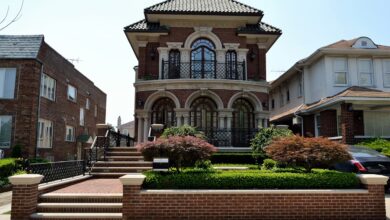6 Tips for Optimizing Home Climate Control

Comfort and energy efficiency are at the heart of every homeowner’s quest for the ideal environment. Whether you reside in a coastal paradise or the heart of a bustling city, creating a harmonious space that is in perfect balance with the season and your lifestyle is key.
However, achieving this equilibrium can be a complex challenge, requiring the mastery of home climate control. In this comprehensive guide, we’ll explore six vital tips to ensure your home’s climate is optimized.
Programmable Thermostat
A programmable thermostat allows you to set different temperatures for various times of the day or week, ensuring that you’re not overheating or overcooling an empty house.
The optimal settings generally suggest a cooler temperature in winter (around 68°F) when you’re awake and warmer (about 7° lower) when you’re asleep or away. Always consider your utility’s peak time when planning your heating and cooling schedules to save on energy costs.
Sealing Air Leaks
These can be found around windows, doors, electrical outlets, and anywhere that exterior walls meet the foundation or roofing. Regularly check for drafts. A simple DIY method involves using a candle or incense around potential leak areas on a windy day to observe any movement of the flame or smoke.
Use weather stripping for movable components, like doors and windows, and caulk for the rest. Don’t forget about the less obvious places, such as recessed lighting, attic hatches, and plumbing vents. Always use the right materials for sealing.
Caulk and foam are excellent for small gaps, while weather stripping comes in different forms, suitable for various applications.
Take Care of Your Heating System
Your home’s heating system; whether it’s a furnace or boiler; is the heart of your winter comfort. Ensuring it’s in top condition is essential for comfort and safety.
Regular heating system maintenance can prevent issues before they arise, keep your heating bills from rising, and extend the life of your system.
Signs you need heater repair:
- Unusual noises such as banging or rattling.
- Increased heating bills without a corresponding change in usage.
- Poor air quality, which can be a sign of a malfunctioning system.
- Inconsistent heating in different areas of the home.
Keep AC Healthy
Air conditioning is a warm-weather staple, but keeping it in good shape is crucial for staying cool and keeping costs down.
Common A/C problems:
- Inadequate refrigerant levels
- Dirty or clogged filters
- Evaporator coil issues
- Electronic control failure
- Investing in A/C Repair
Regular inspection and maintenance can catch these problems early, saving you from costly repairs down the line. Additionally, investing in a residential air conditioning repair service can give you the peace of mind that your system will run smoothly when you need it most.
Ventilation
Regularly change or clean filters to maintain the efficiency of your HVAC system. Keep vents clear of furniture, curtains, and other obstructing items. Use ceiling fans to create air circulation; in winter, operate them at a low speed in a clockwise direction to push warm air down.
Consider installing air purifiers to reduce airborne contaminants. Open windows when the weather permits to allow for natural ventilation.
Efficient HVAC System Use
An efficient HVAC system is the golden fleece of home climate control; it balances comfort with cost and environmental footprint.
Schedule a professional HVAC technician to perform regular system check-ups. They can identify potential issues and make adjustments for maximum efficiency.
Use a programmable thermostat to optimize when your system runs. Make sure your ducts are properly sealed and insulated to prevent air loss. Keep outdoor units free from debris and overgrowth to ensure adequate airflow.




